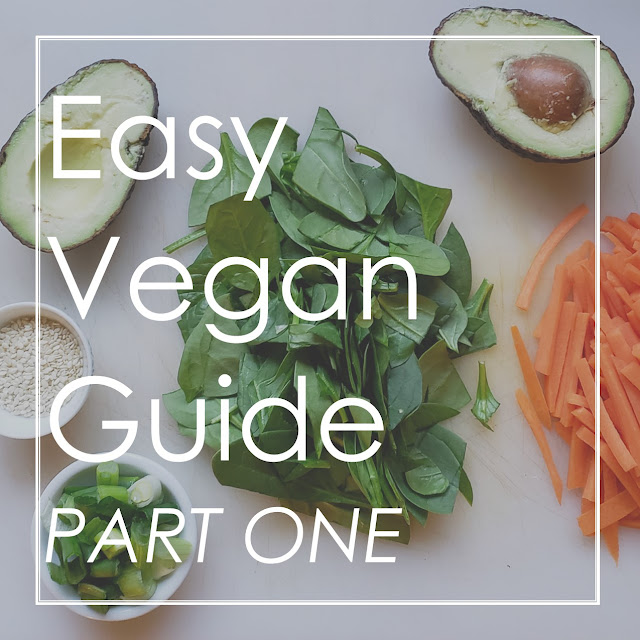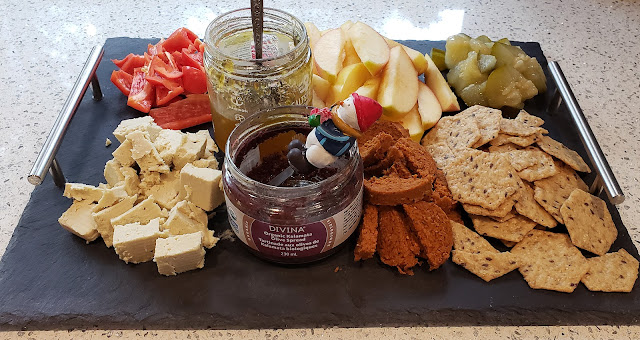Easy Vegan Guide: Part One - Vegan Shopping List
Are you curious about going vegan this year, or cutting back on animal products, but don’t know where to start?
Switching to a vegan lifestyle is a great new year’s resolution. I went vegan in January 2016 and haven’t looked back since. For the next few weeks, I’ll be sharing a series of posts to help you get started.
Why go vegan?
Most vegans, including myself, choose to go vegan because of the pain and suffering the animals endure in various industries including animal agriculture, entertainment, beauty, and fashion. In my case, I was raised vegetarian, so my transition to veganism was a little easier. What made me go from vegetarian to vegan was when I learned about the horrific acts that take place in dairy farms. From learning about artificial insemination to the fact that the male babies are taken away at a young age to be slaughtered for veal, I knew I couldn’t support it any longer. I won’t go into detail about the animal cruelty in this blog post, but I encourage you to read the Vegan Society’s page: Why Go Vegan.
While my main reason for going vegan was for the animals, there are also environmental benefits to going vegan as well. According to Divjot Singh’s University of Waterloo article: Environmental Benefits of a Vegan Diet, eating a vegan diet can reduce greenhouse gas emissions, water use, land use, and the extinction of species through deforestation.
So what do vegans eat?
If you’ve read my blog, you’ll see a small snapshot of the foods I eat. This is one of the most common questions I get, and honestly, it’s hard to answer sometimes because I eat such a variety of food. Vegans can eat any type of food using plant-based modifications, from tacos and burritos, to veggie burgers and veggie dogs, to pizza and pasta…the list goes on! Once you know what to replace the non-vegan ingredients with, you can enjoy all the foods you used to enjoy without the animal cruelty.
Your first vegan grocery shopping experience may be overwhelming at first, so here’s a guide to help you get started.
 |
| Vegan cheese sauce from my blog. |
Vegan Shopping List
The best way to approach grocery shopping with your new vegan lifestyle is to think about your current shopping list. You likely have a list of fruits and veggies, breads and grains, dairy and eggs, and proteins. Now I’ll show you how to adjust the shopping list with a few modifications.
Fruits and Veggies
This category is obvious, as it’s already vegan. Stock up on your regular supply of fresh fruit and veggies, but add extra greens to ensure you get lots of iron and calcium. Frozen veggies is a great way to get your vegetables in while saving you cooking time.
Breads and Grains
A lot of bread is already vegan (yay!). Be sure to look out for the obvious ingredients such as milk, butter, or eggs. But also look for the ingredient L-cysteine, which according to the Baking Association of Canada is made out of duck and goose feathers, and outside of Canada can be made out of human hair (you can read more about this here: https://baking.ca/wp-content/uploads/2019/12/L-Cysteine.pdf).
For grains, I mainly eat rice and pasta, sometimes couscous, and oats at breakfast time. I’m not a huge fan of quinoa, but that is also a great staple to have if you like it.
- Dairy and Egg Replacements This is the first category that will require some research beforehand. There are plenty of brands nowadays that carry vegan alternatives to your favourite dairy products including milk, yogurt, cheese, and sour cream. It’s fun to try different vegan products, so I encourage you to try a bunch and see what you like. I also have a recipe for vegan cheese sauce that is delicious! I would recommend buying nutritional yeast for cooking as it has a cheesy flavour and is high in B vitamins.
- Protein
I often am asked how I get protein on a vegan diet, so here’s the answer: Beans, tofu, mock meats, protein powder, nuts and seeds, and soy milk. Mock meats can be pricey, so the majority of my protein sources come from tofu and beans. They are both so versatile. I would recommend stocking up on tofu and your favourite beans as your staple items, but also have fun trying some of the mock meats in your grocery store!
- Vitamins and Minerals There are certain vitamins and minerals you will want to be mindful of when switching to a vegan diet. Vitamin B12 and vitamin D are not present in vegan foods unless supplemented; for example, non-dairy milks and many mock meats are supplemented with vitamins B12 and D. Nutritional yeast is also a great source of vitamin B12. You will want to make sure you are supplementing for vitamins B12 and D because it can be challenging to meet your daily needs only through food. I currently take a daily multivitamin that contains B12, D, calcium, and iron.
I’m not a dietitian, so I recommend speaking with a dietitian about making sure you meet your nutritional needs. The Vegan RD is also a great resource for vegan nutrition.
Those are the staple items you will need to get started. I also highly recommend having quick meals handy, such as frozen pizzas, for the days when you don’t feel like cooking. It can be harder to find vegan food on the go depending on where you live, so having quick meals at home will help save some time. You can usually find vegan frozen meals in the freezer section at many grocery stores. I also like to have dessert most nights, so I’ll make sure I’m stocked up on some sort of sweets, including dairy-free ice cream, chocolates, or cookies.
That’s everything! Hopefully this blog post will help you feel more confident during your first vegan grocery shopping experience. The next post will be about easy meal ideas, so stay tuned.



Thanks for the great ideas! So many useful ones!
ReplyDeleteI love this. Gimme that cheese sauce!
ReplyDeleteYou are giving such interesting information. It is great and beneficial info for us, I really enjoyed reading it. Thankful to you for sharing an article like this.Best vegan food st. Louis
ReplyDelete